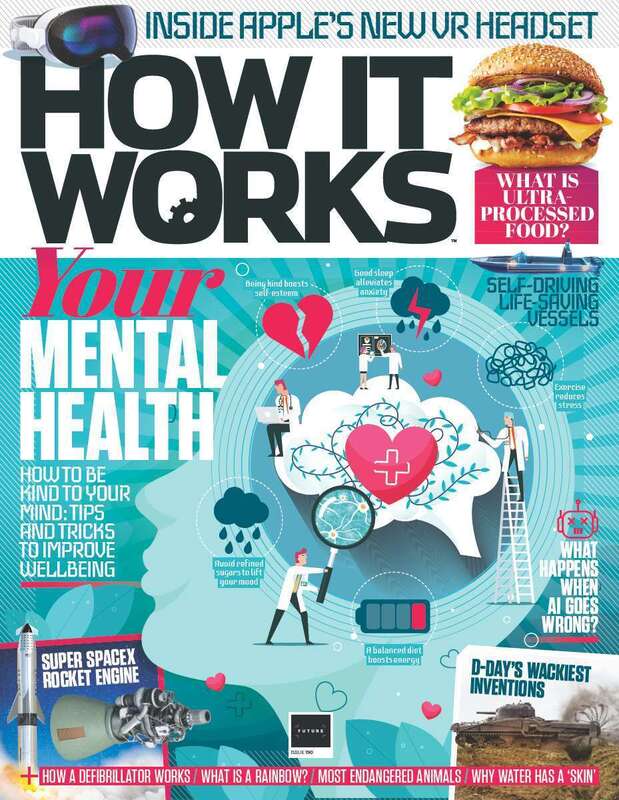National Roller Coaster Day: How do roller-coasters work ?
by Scott Dutfield · 16/08/2019

Alton Towers Resort roller coaster Oblivion
Discover the physics that drive these rides and why we find them so thrilling
There’s no feeling quite like the anticipation you experience when crawling up to a roller-coaster summit, waiting for the inevitable high-speed drop on the other side. Their thrill-inducing prowess is the main reason for their popularity across the globe. Exploiting the fundamental laws of physics, engineers and designers have been able to create rides driven almost solely by natural forces. The rides follow Newton’s first law of motion – that an object in motion will remain in motion and in a forward velocity unless compelled to stop by another force.
With a mechanical push, roller-coaster cars are typically launched in one of two ways. The first method employs a ‘lift hill’, whereby a chain is temporarily attached to the coaster car, pulling it up a tracked hill, releasing the car to freefall on the other side. The second method is with a hydraulic launch. Rapidly zipping along a track, the roller-coaster’s cars and passengers are experiencing conversions in energy from potential to kinetic. Potential energy is the energy stored in relation to its position. In the case of roller-coasters, this stored energy accumulates while climbing loops or hills against the pull of gravity. In the same action as pulling a slingshot, when gravity pulls the car back down the other side of a hill or loop, the speed you feel is generated kinetic energy (motion).
This continual conversation from potential to kinetic energy is what drives the roller-coaster car around the track. The higher a roller-coaster’s hills and loops, the more stored energy is generated and the more kinetic energy released, thus the quicker the car will travel around the track.
But the rate of acceleration can wreak havoc on the human body if it’s too high. Roller-coasters have been around since the 1800s and were made predominantly from wood. Early examples applied that same law of physics to propel cars around a track. However, the inventors greatly underestimated their effects on the human body. G-force is generated during an object’s rate of acceleration or deceleration. Accelerate or decelerate too quickly and the riders may lose consciousness or suffer internal injuries. Typically, a healthy human can tolerate around six gs without any negative effects, other than a case of travel sickness. However, these early attractions exposed passengers to the force of approximately 12 gs during a ride, causing injuries to the thrill-seekers.
Why do we enjoy roller-coasters?
Strapped into a cart that’s wedged on a metal track with dips, loops and turns, travelling at hundreds of kilometres per hour and only gravity as your driving force, it’s a wonder we enjoy roller-coasters. But several biological and psychological responses to these thrills help explain their popularity.
Much like watching a scary film or eating a spicy meal, being glad to be sad has been termed by psychologists as ‘benign masochism’. This human phenomenon is the enjoyment of something the body falsely deems a threatening experience. It’s this realisation that the body has been fooled that leads to the perceived pleasure of ‘mind over body’. The thrill of a roller-coaster evokes our innate ‘flight or fight’ behaviour. In turn, euphoric hormones are released, such as adrenaline and dopamine, giving passengers a chemical roller-coaster rush.

Nemesis turns 25
Launched in 1994, Nemesis was Europe’s first inverted coaster and revolutionised the theme park world. Alton Towers Resort is set to mark National Rollercoaster Day with a three-day celebration for guests to honour the 25th anniversary of iconic rollercoaster Nemesis. From Friday August 16th, the Staffordshire-based Theme Park will celebrate with a reduced entry of £25 and free limited edition digital ride photo for those who bring along an existing official ride photo from any of their coasters.
For more science and technology articles, pick up the latest copy of How It Works from all good retailers or from our website now. If you have a tablet or smartphone, you can also download the digital version onto your iOS or Android device. To make sure you never miss an issue of How It Works magazine, subscribe today!





